Andrefana Dry Forests
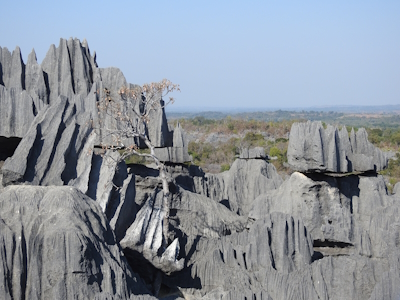
The Andrefana Dry Forests represent centres of endemism within its western dry forests and south-western dry thorny forests.
The habitat in the four national parks and two special reserves evolved in isolation. The dry forests are known for their baobabs and many endemic species of fauna. In addition, Tsingy de Bemaraha Strict Nature Reserve covers a spectacular landscape of limestone karst pinnacles.
Community Perspective: this is a hard site to reach, "an “adventure,” and not for everybody". Practical details on how to get to Tsingy de Bemaraha for example can be found in the review by Els.
Daphni, Hosios Loukas and Nea Moni of Chios
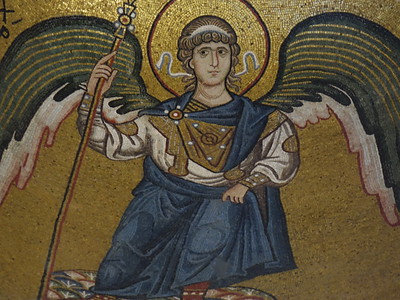
The Monasteries of Daphni, Hossios Luckas and Nea Moni of Chios are masterpieces of the second golden age of Byzantine art.
The three geographically distant monasteries date from the 11th and 12th centuries. They have the same typology and aesthetic features, with a large dome and marble and mosaic decorations on a gold background.
Community Perspective: most people visited Daphni as it is conveniently close to Athens, although a visit never was satisfying as it has been under construction for ages - the first review after fully reopening is from Bergecn. Hosios Loukas (near Delphi) has been covered by Ilya, Clyde and David, while John and Tsunami reported on Nea Moni on the island of Chios.
Delos
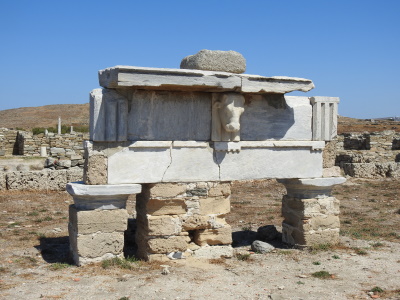
Delos is a small island that holds the archaeological site of one of the greatest Hellenistic sanctuaries.
The island was considered sacred in ancient Greek culture as it was the mythological birthplace of Apollo and Artemis. The feast of the Delians, which was celebrated every four years, was one of the major events in the Greek world. Later Delos began to prosper as a cosmopolitan Mediterranean port, which can be seen in the rich public and residential buildings at the site.
Community Perspective: Delos can easily be reached by one of the daily ferries from Mykonos. It’s a vast and unshaded site. The green walking trail (to the upper area with the foreign-influenced buildings) and the museum are recommended.
Huangshan
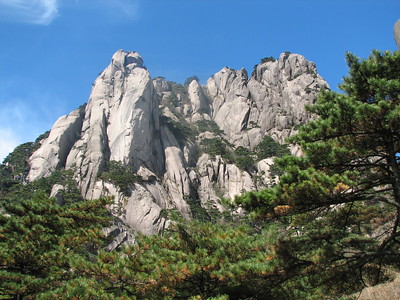
Mount Huangshan has played a leading role in the cultural, literary and artistic history of China because of its scenic beauty.
Its attraction lies in the peculiar shapes of the granite peaks, in the weather-shaped Huangshan Pine trees, and in views of the mountain tops that are often above cloud level. It has become a favourite subject of Chinese landscape painters. The mountains also provide the habitat for numerous endemic plant species, such as mosses and ferns.
Community Perspective: “Uniquely Chinese”, but be prepared also for a very crowded experience. Nan shares a harrowing story of his much-troubled visit.
Itchan Kala
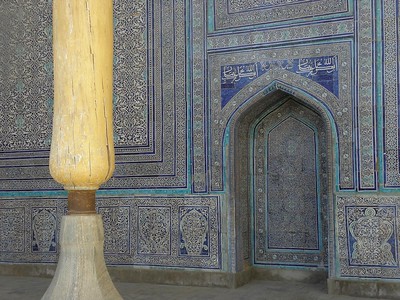
Itchan Kala, the inner town of Khiva, is a coherent ensemble of Islamic architecture in the Khorezm region that dates from the 14th to the 19th century.
It was the last resting place of caravans before crossing the desert to Persia. The town is completely surrounded by brick city walls, which have four gates at the cardinal points. Among the buildings, the Djuma mosque and the many medressehs stand out, as well as traditional domestic architecture.
Community Perspective: The town is very heavily restored and operates virtually as an open-air museum. One can best soak up the atmosphere in the early mornings or evenings. Recommended sights are the Kunya Ark and its viewing platform, Tash Hauli's Harem, the unfinished Kalta Minor and the Djuma Mosque (with the least claustrophobic minaret to climb).
Jesuit Missions of the Chiquitos

The Jesuit Missions of Chiquitos are a group of six churches that show the adaptation of Christian religious architecture to local conditions and traditions.
They represent the living heritage of the reducciones: theocratic settlements inspired by the “ideal cities” of the humanists. The churches have unique architecture and are mostly made out of wood. They also hold popular art objects from the Chiquitos population.
Community Perspective: Chiquitania is unique, with a slow pace of life, but also tough (“it takes a special kind of people to thrive here”) and often hot. Most reviewers visited only one or two of the churches due to infrequent public transport, but Patrik managed to cover all of them in four days. It’s best to start from San José if you want to do the full circuit. Timonator provides additional tips for that route.
Kizhi Pogost

Kizhi Pogost is an enclosure with religious buildings typical for sparsely populated Orthodox communities.
The two 18th-century wooden churches and an octagonal wooden bell tower from the 19th century are located on an island in Lake Onega in Karelia. One of the churches was used only in summer, the other only in winter. The fully wooden structures blend in perfectly with the surrounding landscape.
Community Perspective: “Iconic… Kizhi’s striking shapes, magnificent craftsmanship and wonderful location lift them way out”. It receives a lot of visitors and can be reached via a 75-minute hydrofoil journey from Petrozavodsk (see tips from Wojciech) or on a cruise (as Solivagant did).
Kremlin and Red Square
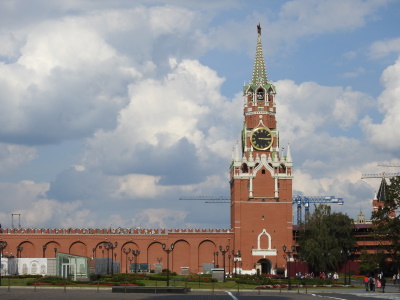
The Kremlin and Red Square, Moscow are associated with all major events in Russian history, and its monuments are great examples of Russian architecture.
The city of Moscow was founded in 1156 as a seat for the tsars. The current Kremlin dates from the 19th century. It consists of several buildings: churches, palaces and places in political use. A red brick wall surrounds the complex. The Red Square is a city square from which the major streets of Moscow radiate in all directions.
Community Perspective: Everybody marvels at St. Basil's Cathedral and the Assumption Cathedral, while Solivagant concentrated his review on Lenin’s tomb and Alexander managed to get into the State Kremlin Palace. Depending on how busy it is, it may be necessary to book tickets for the Kremlin in advance (as reported by Els).
Kyiv Cathedral and Lavra
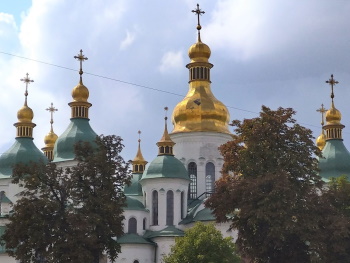
Kyiv: Saint Sophia Cathedral and Related Monastic Buildings, the Kyiv-Pechersk Lavra consists of two monuments known for their decorative art and architecture.
The Saint Sophia Cathedral (1037) was designed to rival the Saint Sophia of Constantinople. In its interior, the Byzantine frescoes and mosaics have been preserved. The 16th-century Kyiv-Pechersk Lavra is a monastery renowned for its underground churches and catacombs. It has been modernized in the style of the Ukrainian Baroque.
Community Perspective: St. Sophia’s cathedral is worth visiting for its frescoes, while the Lavra is an active pilgrimage site, where in its caves the mummified bodies of saints can be viewed in almost total darkness. Tsunami has put both buildings into a religious-political perspective.
Potsdam
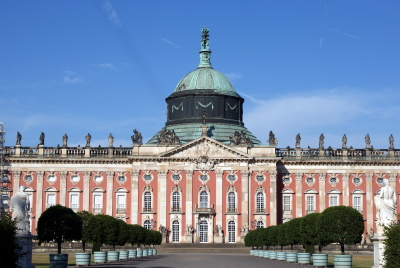
The Palaces and Parks of Potsdam and Berlin comprise an eclectic ensemble of architectural and landscaping masterpieces.
Potsdam was the residence of the Prussian kings until 1918; its majestic buildings were built mainly during the reign of Frederick II the Great (1740-1786) and according to designs of Peter Joseph Lenné. He incorporated influences from Italy, England, France, Flanders, Paris and Dresden.
Community Perspective: the Potsdam gardens are good for walking and an easy day trip from Berlin. The Sanssouci Palace is its main attraction, but it cannot be recommended to those with an allergy to “Stately Homes”. We can count on Hubert to perfectly describe a site like this!
Rio Abiseo National Park
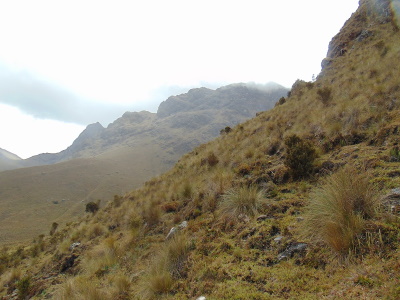
Rio Abiseo National Park is home to a large number of species of flora and fauna, as well as over 30 pre-Columbian archaeological sites.
The park comprises an isolated river basin covered by forests, transitioning into a mountain landscape at higher elevations. The critically endangered Yellow-tailed Woolly Monkey is known to live in the park and relies on it for its survival as a species. The most famous archaeological site in the park is Gran Pajatén, a ruined settlement that was occupied between 900 and 200 BCE, and 200 BCE to 600 CE.
Community Perspective: This is one of the most difficult to visit WHS in South America; Wojciech managed to set foot in the park after a harrowing drive, and also provides practical tips for future visitors. Timonator arrived from the North by boat.
San Gimignano
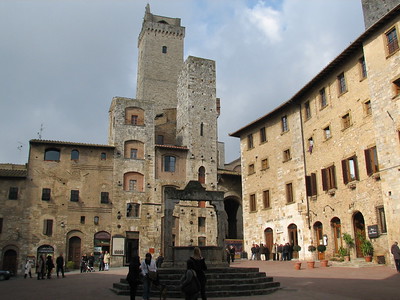
The Historic Centre of San Gimignano is a well-preserved medieval Tuscan townscape.
Its 14 towers, once controlled by rival factions, rise above its palaces. The small town center has preserved its medieval squares and streets. The two main churches contain a series of masterpieces of 14th and 15th-century Italian Renaissance art in their original architectural settings.
Community Perspective: The stone medieval towers are its main landmarks. The Torre Grossa can be climbed and provides a fine 360-degree view of San Gimignano and the surrounding valley. An overnight stay will bring the joy of the colours of the sunset and the absence of groups of tourists.
Santo Domingo
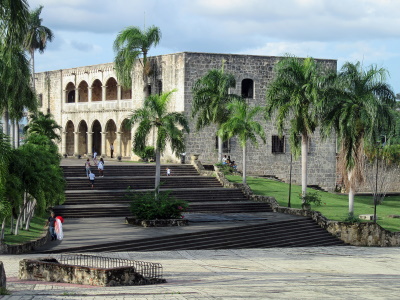
The Colonial City of Santo Domingo was an early colonial settlement in the New World, that strongly influenced the development of other cities in the Americas.
Santo Domingo was founded in 1498, and its monumental buildings include the Western Hemisphere's first cathedral, its first monastery, its first hospital, its first university, and its first court of law. The city is laid out in a grid pattern adapted to the geographical circumstances.
Community Perspective: The Colonial Zone is not very big, and can easily be explored on foot. The star attraction is the well-preserved Cathedral of Santa Maria la Menor, and the Parque Colón, a beautiful tree-covered plaza, also comes recommended.
St. Petersburg

The Historic Centre of Saint Petersburg and Related Groups of Monuments has a planned urban design with many baroque and neo-classical monumental buildings.
The shape of the city was developed by Peter the Great during the 18th century and exerted great influence on later city building in Russia and Finland. Its construction symbolized the opening of Russia to the Western world and a number of foreign architects worked on the great buildings. It also contains monuments related to the Bolshevik Revolution that led to the formation of the U.S.S.R.
Community Perspective: Try to visit this beautiful city in summer as it gets very cold and dark otherwise and you may even get snowed in. It can be explored well on foot. Highlights include the Hermitage, Church of the Savior on Spilled Blood, Peterhof, and the Peter-Paul fortress.
Tongariro National Park
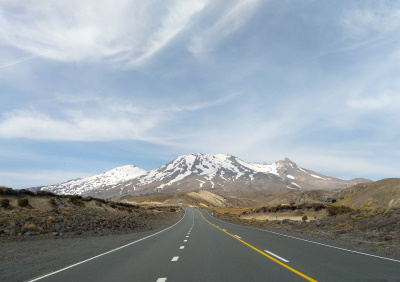
Tongariro National Park is an associative cultural landscape of volcanoes that hold spiritual connections for the Maori.
The active volcanic mountains Ruapehu, Ngauruhoe, and Tongariro are located at the centre of this park on the North Island of New Zealand, and show a range of volcanic features. The mountain summits are of great significance for the cultural identity of the local Maori people.
Community Perspective: hiking the Tongariro Alpine Crossing is a fantastic way to see the park. Nan has described what this involves.
Extended Sites in 1990
Canadian Rocky Mountain Parks
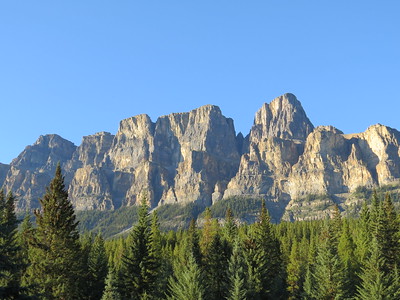
The Canadian Rocky Mountain Parks form a striking mountain landscape, that includes a full range of glaciation features and harbours the renowned Burgess Shale fossil site.
The seven contiguous parks are aligned along the Continental Divide, separating the drainage basins of the Arctic, Pacific, and Atlantic oceans. They hold glaciers, canyons, waterfalls, karst systems and thermal springs. The Burgess Shale preserves the fossils of soft-bodied marine organisms, and it is one of the earliest areas of those so far found.
Community Perspective: You need multiple days or even weeks here as the combined parks cover a large area. The majestic mountains and cold glaciers in the national parks of Banff, Jasper, Kootenay and Yoho have been well-covered in the reviews, and especially Banff and Jasper can feel crowded. Jay has described a visit to the lesser-known Mount Robson Provincial Park.
Joyce van Soest The Netherlands - 28-Dec-05

Having lived in the town of Jasper in the Canadian Rockies, I have been hiking through the Rocky Mountains a lot. It is a great place and there's so much to see. Of course, Jasper and Banff are touristy towns with crowded hiking trails, but if you look a bit further or visit the place off season, you can wander around all alone. And even when you do visit the most touristy sites, you are still impressed with the magestic mountains, the thundering waterfalls, the cold glaciers and the wandering wildlife.
Read OnOlympic National Park

Olympic National Park covers an isolated and wet area with a varied topography from seashore to glacier.
The park can be divided into three basic regions: the Pacific coastline, the Olympic Mountains with glaciated peaks, and the temperate rainforest. It has the lowest-altitude glaciers in the world. Endemic wildlife includes the Olympic Marmot and subspecies of trout.
Community Perspective: anyone who visits here had better like the color green, as you will see heavy fringes of moss hanging from the trees. The park is amazing, even when it rains a lot. The reviews by Kyle, Dennis and Jay give a good overview of the different portions of the park.
Klaus Freisinger Austria - 01-May-05
My visit to Olympic National Park happened some time ago, but I still remember vividly the enormous tress, high peaks, big glaciers, and breathtaking views. The vegetation especially was great and seemed to be right out of the Amazon jungle. Finally I knew what was meant by "temperate rainforest". A portion of the park is on the Pacific Ocean, and you can spend endless hours wandering along the untouched beach, seeing only birds, driftwood, and the occasional whale (seriously). For anyone visiting the Seattle area, this is a must-see.
Read OnRome
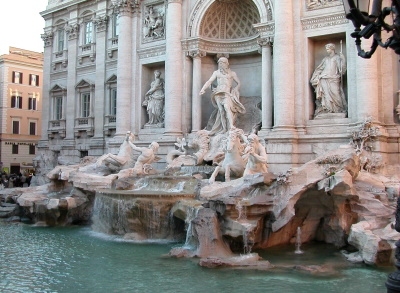
The Historic Centre of Rome, the Properties of the Holy See in that City Enjoying Extraterritorial Rights and San Paolo Fuori le Mura comprise major monuments of Roman Antiquity and the Christian faith.
An extraordinary number of monumental remains of Ancient Rome have been preserved here and have always been visible in its streets. Christian Rome was built on top of that, adding Renaissance and Baroque monuments that were created by some of the most renowned artists of all time. Its influence around the world has been both secular (eg. in law, and language) and religious (eg. the goal of pilgrimages, and the presence of the Pope).
Community Perspective: No city “comes close to Rome in terms of history, culture, architecture, and influence on the rest of the world”. It needs several visits of multiple days, also over time as they keep on discovering and opening up things to the public.
Klaus Freisinger Austria - 01-May-05
Rome is in my humble opinion the greatest city on the planet. While I like many others as well, none comes close to Rome in terms of history, culture, architecture, and influence on the rest of the world. This together with all things that make Italy such a great place to visit - especially the food, of course - makes a combination that I don´t think can be beaten anywhere. For a visitor, Rome´s sights generally fall in two categories: Christendom and Antiquity, with some great Renaissance/Baroque monuments thrown in (Trevi Fountain, Spanish Steps etc.) For both, Rome is the top place to visit (sorry, Athens, you are fascinating, too, but Rome was not called caput mundi for nothing)
Read OnTe Wahipounamu
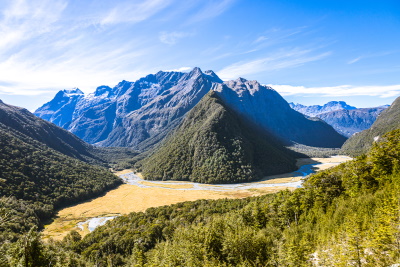
Te Wahipounamu - South West New Zealand consists of four national parks renowned for the scenic beauty of their wild mountain landscapes.
The area was shaped by tectonic, climatic, and glacial processes, resulting in fjords, glacial lakes, glaciers and moraines. It contains some of the best modern representations of the original flora and fauna present in Gondwanaland, such as kiwis, ‘bush’ moas, carnivorous Powelliphanta land snails and the endangered takahe.
Community Perspective: Comprising Aoraki/Mt Cook, Fiordland, Mt Aspiring, and Westland NP’s, “it could easily be split into a few different World Heritage Sites, because each area has such unique aspects”. Among the highlights, Squiffy has described Doubtful Sound, GabLabCebu and Nan the Franz Josef and Fox Glaciers, and Carlo Milford Sound and the Kepler and Routeburn hikes.
Ben Pastore USA - 01-May-05
In a land of superlatives, Fiordland National Park earns the highest ranking possible in all around natural beauty. My jaw hurt from repetitive dropping as we made our way to scenic Milford Sound, passing through majestic glacier-topped mountains ringed with temperate rain forest. At Milford Sound, I suggest the boat tours, as the raging waterfalls, dolphin encounters and lazing seals are best seen from this vantage point. I have traveled extensively and I do not say this lightly when I call this area the most beautiful spot on earth.
Read On